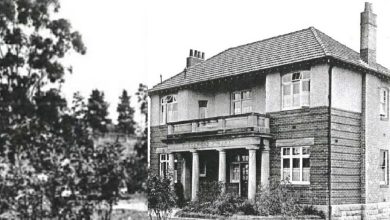Woodsmoke: are you smoking out your neighbour?
Hawkesbury residents are being asked to help improve air quality by checking they are using wood-burning heaters correctly.
On colder days, woodsmoke particles from inefficient heaters float in the air and can be seen as a smoke haze that sometimes sits over built-up areas.
Woodsmoke can cause breathing difficulties, especially for people suffering from existing respiratory conditions, such as asthmatics, and for very young children and frail older people. There is also evidence that smoke pollution can cause cardiac problems.
However, woodsmoke pollution can be reduced by using aged dry wood and running wood-burning heaters correctly.
The NSW Office of Environment and Heritage estimates that in some towns and cities in NSW, around 30% of total annual emissions of fine particulate matter (PM2.5) are emitted from wood-burning heaters. On a winter’s day, wood-burning heaters may be responsible for more than 60% of fine particle pollution. However, a large part of this is caused by the user restricting the airflow control.
As a general rule, if you can see or smell smoke from the wood-burning heater, then the wood-burning heater, or open fireplace, is not being used correctly and will impact your family and neighbours.
Unfortunately, Hawkesbury City Council receives many complaints about the smoke from wood-burning heaters every year. When the Council receives a complaint regarding a smoky wood-burning heater, Council officers must investigate it under The Protection of the Environment Operations Act.
Here are ten simple steps you can take to reduce woodsmoke pollution
- If you are buying a wood-burning heater, make sure it has a compliance plate showing it meets the Australian Standard (AS/NZS 4013:2014).
- Burn only dry, aged hardwood in your wood-burning heater. Unseasoned wood has lots of moisture, which causes a fire to smoke.
- Store your wood off the ground and under cover in a dry, ventilated area. Freshly cut wood needs to be stored for between eight to twenty months to properly season.
- Never burn rubbish, driftwood, painted or treated wood. These are sure to pollute the air and can produce poisonous gases.
- When lighting a cold heater, use plenty of dry kindling to establish a good fire quickly.
- Use several small logs rather than one large log and stack them loosely in your heater, so air can circulate around them aiding combustion. Don’t cram the firebox full, which will limit air circulation, making it harder to start the fire.
- Keep the flame lively and bright. Your fire should only smoke when you first light it and when you add extra fuel. Open the air controls fully for 5 minutes before and 15 to 20 minutes after reloading the heater.
- Don’t let your heater smoulder overnight – keep enough air in the fire to maintain a flame.
- Check your chimney regularly to see how well your fire is burning. If there is smoke coming from the chimney, increase the air supply to your fire.
- Have the chimney cleaned every year to prevent creosote build-up.
It is the responsibility of all owners of wood-burning heaters to follow these easy steps and minimise the harmful effects of smoke pollution on their neighbours and the environment.
To install a wood-burning heater in your house, you must first seek Council approval as required under the Local Government Act. Some parts of the Hawkesbury Local Government Area, such as urban areas, are not appropriate for wood-burning heaters. It is recommended that you contact the Council prior to purchasing the heater.
Under the Protection of the Environment Regulation, all wood-burning heaters and their accompanying flues must comply with Australian Standards AS4012 and A4013. The flue must be suited to the heater so that the system can operate efficiently without causing visible smoke.
If you decide to seek approval for the installation of a wood-burning heater in your home, you should choose one with a particulate emissions factor of less than 1g/Kg.
To download the application form to install a wood-burning heater, please click here.
If your wood-burning heater is older than 20 years, it may no longer comply with current particulate emission regulations, and it is strongly recommended that you replace it with alternative cleaner heating methods or a new wood-burning heater with a particulate emission factor of less than 1g/Kg.
A list of certified wood-burning heaters and their emission ratings can be found here or on the specification sheet when purchasing a wood-burning heater.
For information on how to use your wood-burning heater better, visit Council’s website www.hawkesbury.nsw.gov.au/for-residents/pollution-and-noise/reducing-winter-air-pollution or visit the EPA website at www.epa.nsw.gov.au/woodsmoke











